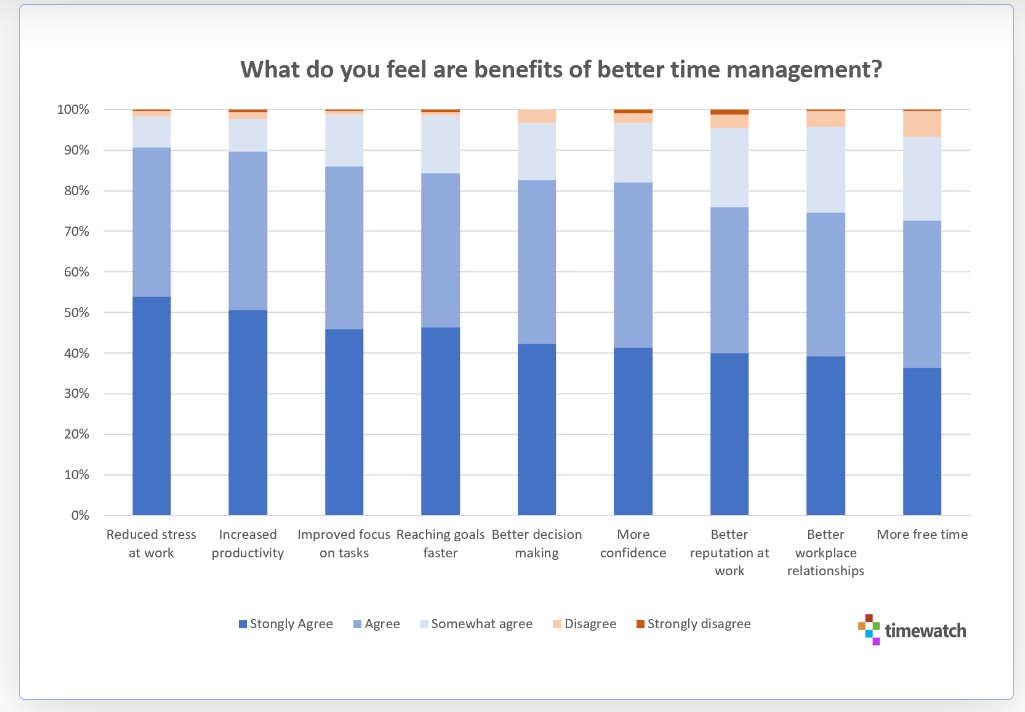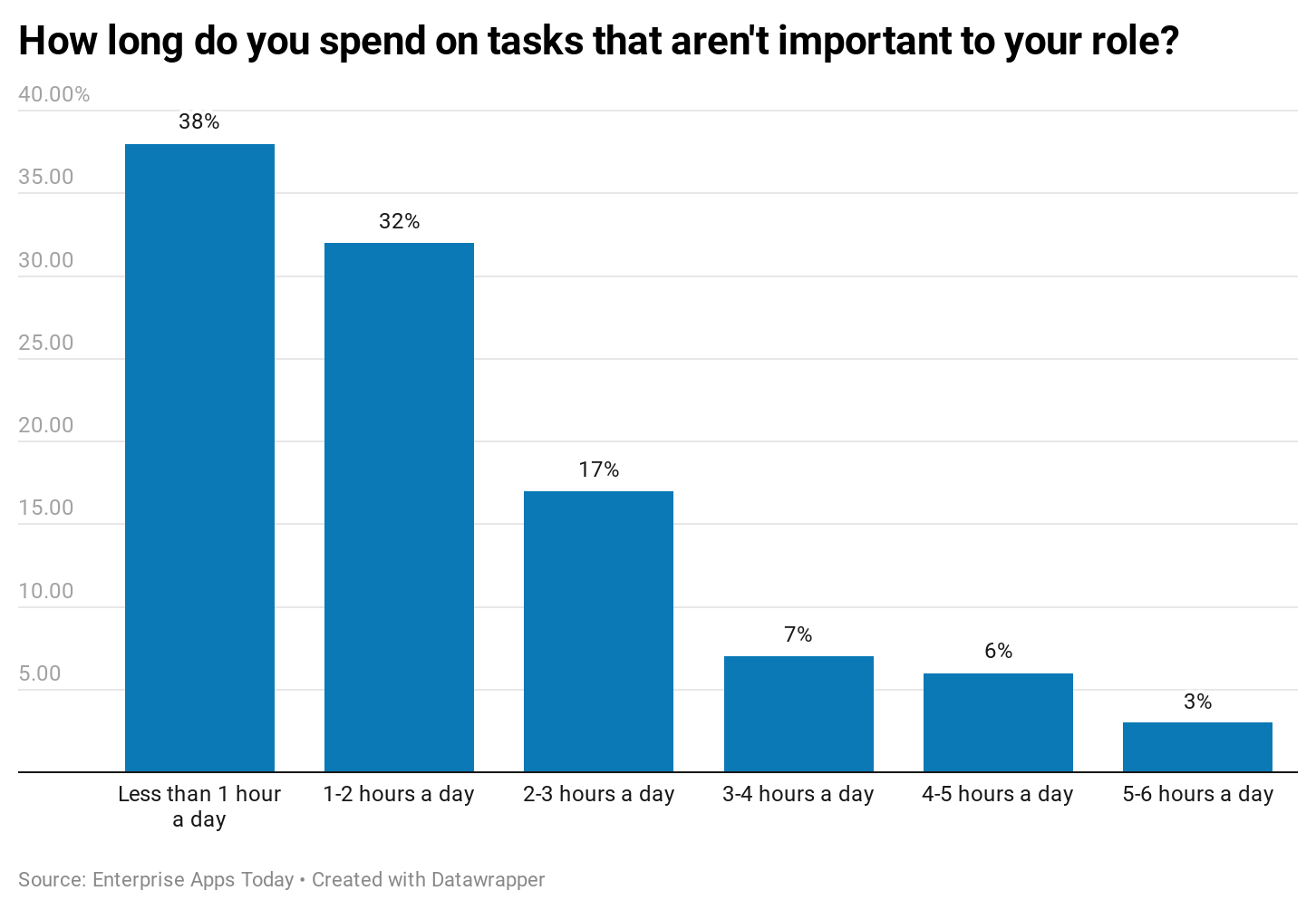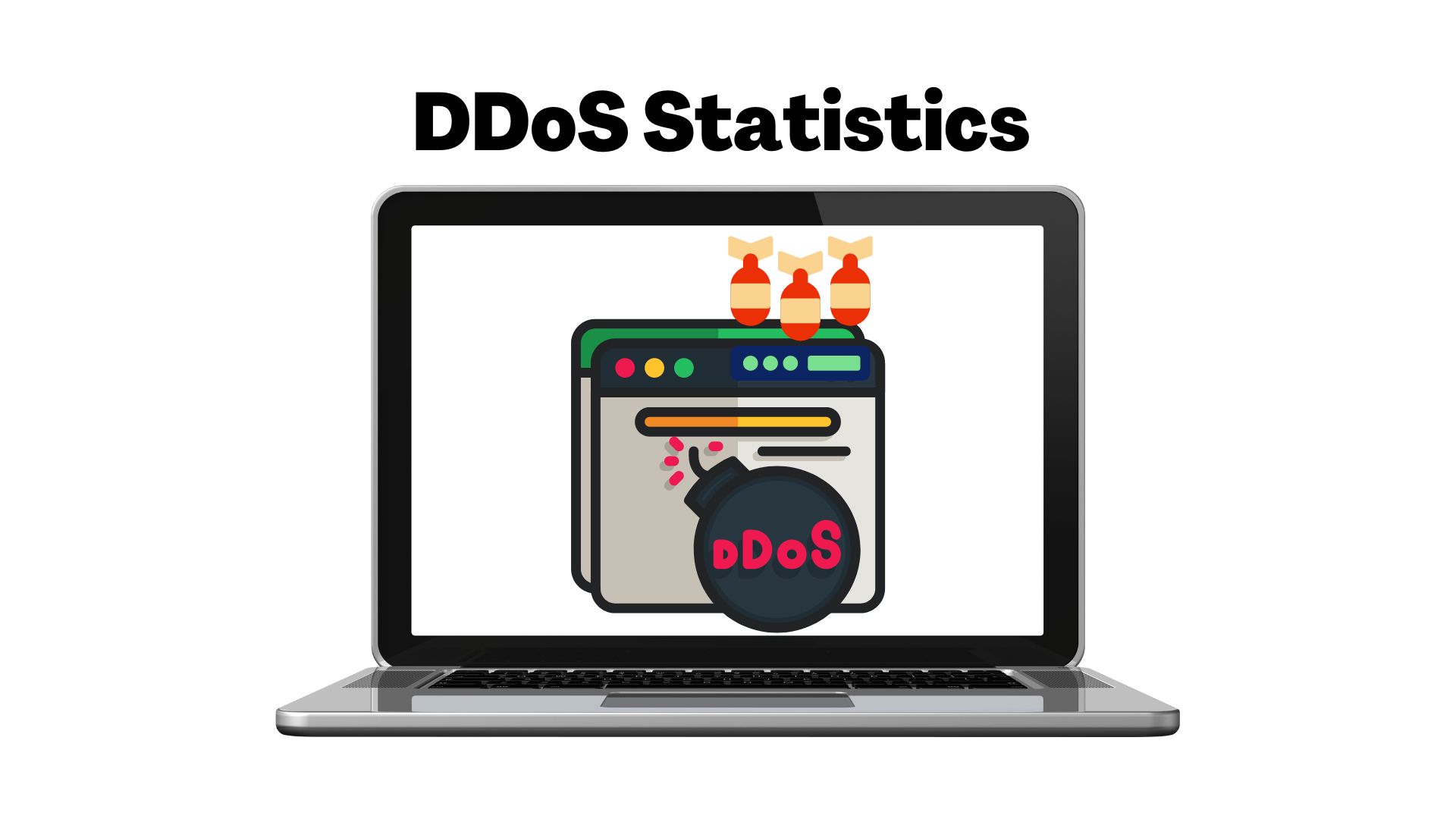25+ Time Management Statistics And Facts That Will Improve Your Productiveness

Page Contents
Time Management Statistics: Most recent time management statistics show that businesses waste a significant amount of time that could be used to generate revenue.
Employees spend on average 40 hours at work each week, but the amount of time they waste is astounding. Recent statistics on time management at the office show that a few of the most time-consuming activities include attending endless meetings, searching for documents on computers or other devices, and wasting time.
In this article, we will discuss some important points as mentioned below:
- General time management statistics and facts.
- Time management statistics for education and students.
- Time management statistics in the workplace.
- Time management benefits statistics.
Let's begin by taking a quick look at vital time management statistics.
Time Management Statistics (Editor's Choice)
- The search term “Employee Monitoring” had a significance of 100 in December 2020.
- 22% of the cohorts who set goals saw an improvement in their academic performance that year.
- Planning for 10 minutes daily can reduce wasted time by up to 2 hours.
- Workers in the logging and mining industry spent 44 hours a week.
- Each day, 44 minutes are spent by employees on social media.
- In meetings, senior executives can squander up to 23 hours every week.
- The average employee in the United Kingdom spends over 2 hours and 13 minutes procrastinating and doing other things than work.
- The average full-time employee in the United States worked 41.5 hours per week.
- Each year, searching for paper documents results in the loss of 16 working days.
- In a recent survey, 60% of participants claimed that the coronavirus had negatively impacted their work-life balance between March 2020 and June 2020.
- Only 17% of individuals use time tracking software, suggestions, and hints.
- 86% of parents rated students' time and organizational management skills as “Needed Improvement.”
- The American Psychological Association found that approximately 46% of stress in the United States is due to an excessive workload.
- Accounting maintenance tasks take up one-fourth of an accountant's working time.
Time management statistics show that we spend most of our time at work. But, it is astonishing how much time we waste each day during a typical working day.
This has a direct impact on our leisure activities.
Time Management Statistics and Facts
Most of our time is spent at work, except sleeping, which we do for nearly 26 years of our lives. The most recent time management study shows that we spend roughly 13 years in school.
#1. “Employee Monitoring” had around 100 value interest in December 2021.
Time management statistics show that many individuals were curious about techniques for monitoring personnel. This interest can be attributed to people working from home due to the coronavirus.
#2. 22% of the cohorts who set goals saw an improvement in their academic performance that year.
Numerous studies have shown that around 88% of persons who don't set goals don't improve their academic performance; however, 2 out of 10 people who set goals reported seeing an improvement in their academic standing.
#3. Planning for 10 minutes daily can reduce wasted time by up to 2 hours.
According to a time management trend becoming increasingly popular online, a few minutes of planning can prevent hours of pointless effort.
To be more precise, you save 10 minutes for every minute of planning, so all it takes is an investment of roughly 10 to 12 minutes to reduce time-wasting by up to 2 hours.
Beyond that, you'll probably enter the territory of diminishing returns. After all, it would be hilariously comical to procrastinate while planning to use your time efficiently.
We're not claiming that adopting this trend will make your life perfect—there are still things beyond your control—but at least you'll know that any time lost wasn't a result of poor time management on your part.
#4. Only 15% of companies offer 40-hour workweeks, till 2020.
Whatever the scenario, there will undoubtedly be some kind of change, either large or small. This type of event may require different working conditions in order to reach your goals; however, you will not know until it happens. It is essential to be ready for whatever comes next. The number of hours you work per week will vary depending on the nature of your job and the industry.
For instance, the Perpetual Guardian Company in New Zealand has reduced its staff's workweek to four days. The company was already experiencing positive performance results after one year of the program.
#5. Only 5% of people write down their bucket list.
Think again if you believed that time management was primarily a workplace issue.
You know, you kind of have to do your work there at least half-decently to get paid, so it's not even that horrible.
95% of individuals don't even attempt to keep track of non-essential and non-work-related activities (often known as the things you just want to do).
#6. Loggers and miners put in an average of 44 hours a week at their jobs in 2021.
According to stats on time management, professionals and managers in the business sector worked an average of 8.8 hours a day in 2020. Workers in the utility sector put in the most hours per week (42.9), followed by employees in various industries such as construction (30), transportation (31), and manufacturing (33.9). Employees were doing leisure work.
#7. 73% of the people who keep to-do lists say they have a calming effect.
Although there are many different time management techniques, the simple to-do list is the most popular. Even if the majority of people only use it when necessary.
Nevertheless, 73% of people who use to-do lists say that one of the main reasons they do so is because they view it as a stress-reduction tool.
The scientific explanation is that we humans are very visual creatures. Seeing all of our tasks on a piece of paper (or a screen) in front of us naturally makes it much simpler for us to handle our daily duties.
#8. Adults who frequently procrastinate make up 20% of the population.
According to procrastination statistics, repeatedly delaying chores has become accepted as usual. You can visit any social media platform, and you will see many individuals having fun and posting TikTok videos to let everyone know that they are currently dallying.
However, psychologists aren't quite as upbeat about it; they estimate that roughly 20% of adults struggle with chronic procrastination. In the 1970s, barely 5% of people did.
Time Management Statistics For Education And Students
Time management stats for education and students. According to college student time management stats, it is clear that education can be seen as an inefficient business. Most students admit that they lack the necessary organizational and time management skills to achieve the highest grades. In addition, while teachers have minimal time in class, they must also deal with distractions such as uninterested students.
#9. Teachers can teach for up to 60% of the working day.
Teachers spend far less time in the classroom than one might expect due to breaks, the length of time between lessons, and other activities. Of course, when students do not listen or are disengaged, the pressure on instruction increases.
#10. 20 hours per week is more than enough time to study.
Students struggle with time management. They often find themselves cramming for exams at the last minute. If you're in school, here's the best schedule for you: According to data from student time management, students should allocate 20 hours per week for learning. This includes 15 hours of class time and 5 hours of personal study time.
#11. Procrastination is a significant problem for up to 95% of students.
College students and time management seem to be an unnatural pairing.
It isn't just that nearly everyone does it, but they are also acutely aware that 70% of students consider themselves to be ‘procrastinators,' and 87% of students admit they would get better grades if not wasting so much of their time.
What exactly is “so much” time?
Well, it's five or more hours a day for 21.6% of students.
#12. According to time management stats, 87% of students could increase their grades if they had better time management skills.
Students claimed to schedule their time using handwritten notes on a calendar. The majority (50%) of students said they use various methods to arrange their lecture notes, homework, research, and contacts. This is a terrible time management statistic for college students. Isn't this the technological era?
Time Management Statistic At Work
It is incredible how much time workers spend at work, even though the average workweek lasts over 40 hours. According to the latest data on workplace time management stats, some of the most time-wasting tasks include endless meetings, searching for documents, and usually wasted effort.
#13. Every week, senior managers attend meetings for at least 23 hours.
Time management statistics and research show that the number of time executives spent in meetings almost quintupled between 1960 to 1980. Meetings that aren't required take up a lot of time. You should have a plan and make sure you attend the essential appointment before going to another one.
#14. On average, businesses spend 16 days per year looking for paper documents.
Despite the availability of various new technologies such as document management software and digitization, many companies still “do several things the old-fashioned way.” As a result, according to the latest time management facts and statistics, people squander a lot of time.
#15. In 2022, 11% of businesses will acknowledge that accounting-related chores have caused sleepless nights.
Having good time management skills is essential for those who wish to work effectively, successfully, and efficiently in a business environment. According to time management stats from 2021, 1 in 10 businesses will experience accounting-related difficulties in 2022.
What does this have to do about time management?
You are more likely to spend more time on your work and responsibilities if they are stressing you out.
This will impact your productivity with other responsibilities because it will take away from your leisure time.
#16. Average workers spend around 2 hours and 11 minutes Procrastinating every day.
The most widely used techniques for procrastinating at your job:
- Gossiping can last up to 18 minutes.
- Texting, takes up 28 minutes every day.
- Daydreaming takes 20 minutes.
According to the most recent statistics on time management, Facebook squanders 16 minutes of your time. In the majority of cases, this number is far greater.
Time Management Advantages Statistics
Happy employees are productive workers! Successful workplaces have financial benefits. Time management skills statistics show various ways for employees to make their teammates more comfortable.
Here is how it all comes together:
#17. In 2020, 37% of North American businesses did not have a flexible work policy.
By 2020, more than one-third of American companies had no official policies to support remote work. This is concerning, considering businesses lose money daily when their operations aren't running.
There is some good news.
According to the survey, just % of companies without work-from-home policies implemented and adopted them in 2012. That's a good beginning! Hopefully, more companies will do the same.
#18. Employers in North America anticipate that 52% of their employees to telecommute in 2021.
Time management statistics show that over half of North American companies anticipate their workers to work from home in early 2021. Due to the epidemic, most businesses have changed their policies to allow for flexible working.
#19. The actual amount of time that a full-time employee in the United Kingdom spent procrastinating in 2020 was 2 hours and 11 minutes.
According to stats on poor time management, employees in the United Kingdom who waste around 2 hours daily procrastinate. Most people take time off from work to fantasize, gossip, or communicate with others. Men dominated only one area: chatting.
By the end of that year, the procrastination habit had cost United Kingdom businesses £2 billion.
#20. According to you, what are the advantages of time management?
We were curious to know what people believed to be the significant advantages of time management. A list of nine distinct advantages was prepared. Respondents were then asked whether they agreed, strongly agreed, disagreed, somewhat agreed, or strongly disagreed that these advantages result from time management.
The percentages of respondents who strongly agree or agree that these are benefits are shown in the summary below:
- 91% of people believe that more effective time management will result in reduced stress at work.
- 90% of respondents believe better time management will result in increased productivity.
- 86% of individuals think that it will result in improved focus on the task.
- 84% of people believe it will assist in reaching goals faster.
- 83% of respondents think it will result in better decision-making.
- 82% of respondents think it will increase people's confidence at work.
- 76% of individuals claim it will boost their reputation at work.
- 75% of respondents think it will result in better workplace relations.
- 73% of respondents believe better time management will allow more free time.

(https://www.timewatch.com/blog/time-management-statistics-in-2022/)
#21. According to one survey, the total time people waste each day on unimportant tasks at the workplace is mentioned below:
- 6% of the respondents waste nearly 4 to 6 hours per day.
- 7% of people waste around 3 to 4 hours a day.
- 17% of individuals waste roughly 2 to 3 hours every day.
- 32% of respondents waste approximately 1 to 2 hours per day.
- 38% of people waste less than one hour per day.

(https://www.timewatch.com/blog/time-management-statistics-in-2022/)
Poor Time Management Statistics
Business owners spend up to a third of their week on the most frequent low-value chores. However, according to time management research, many people skip filling meals and stop going to a fitness club after 30 days. Here are the most recent statistics on poor time management.
#22. In 2021, employees used social media for more than 44 minutes daily.
Time management statistics show that in 2021, workers spend around an hour each day on social media. That is nearly 220 minutes every Monday to Friday or almost 3 hours weekly.
#23. Owners of micro-businesses spent approximately 15 hours on financial management tasks.
Time management stats show that entrepreneurs spent nearly 19% of their productive time on tasks that accountants or bookkeepers could handle.
For sole entrepreneurs, the situation worsened because they spent 31% of their week dedicated to activities in the same industry.
These companies contribute a substantial amount to GDP, so perhaps it is time for governments to step in. One possibility would be to subsidize the services. It would also be excellent if they provided information on the benefits of using accounting technologies, hiring accountants, or outsourcing.
#24. In 2020, 75% of workers claimed they would be unable to manage their personal and professional life.
Due to the COVID-19 pandemic, most people were forced to work from home. This was an entirely new experience for many people across the globe. Statistics on time management show that around 60% of respondents struggled to balance work and family life during the period.
Time Management Information and Its Consequences
According to time management stats, establishing reasonable deadlines, getting enough sleep, and planning your day may contribute to your work happiness and productivity.
#25. People who get 7-8 hours of sleep each night are more likely to be successful, happy, and productive.
It has long been disputed whether having a whole night's sleep affects one's performance at work. More rest makes you feel better. It will also enhance your mood. In addition, 8 hours of sleep every night is beneficial for one's career, according to statistics.
#26. Two-thirds of the workforce reported burnout symptoms during the year.
According to statistics on time management in 2021, around 66% of workers have felt highly exhausted at some point in their employment.
This is an alarming statistic due to its impact on work performance and health.
#27. Remote employees received a WHI score of 75 in 2020.
Employees who work from home have a WHI (Workforce Happiness Index), which is 25 points more than workers who work in an office. 57% of remote workers said that they are satisfied with their employment. Only 50% of office workers feel the same.
#28. The average American workweek was 41.5 hours long in 2020.
A 24/7 Wall Street study indicates that not all 37 OECD countries follow the 40-hour rule. According to stress and time management data, employees in Denmark workers worked the least hours per week (on average, 37.2). Participant feedback revealed that Denmark was the most rewarding work environment. The country with the highest number of employees was Colombia.
According to the survey, US workers worked 41.5 hours each week on average. 11% of respondents reported working more than 40 hours each week for the past two weeks.
Conclusion
The latest time management statistics show that an organization's employee happiness is important and impacts their performance. Most recent workplace time management statistics and bad habits include endless meetings, searching for documents, and usually waste of effort.
Happy workers are far more productive, procrastinate less, and contribute more to the company.
Successful people have a goal-oriented mindset. They avoid time-wasting activities and prefer to be organized.
Last but not least, a study found that happy workplaces are 31% more productive, which might result in a 37% increase in revenue and sales.
We might be more productive at work by creating goals and practicing self-discipline.
At the very least, we hoped that our collection of time management statistics would serve as a reminder that you have 3 hours of free time each day. Make them use!
Sources

Barry is a lover of everything technology. Figuring out how the software works and creating content to shed more light on the value it offers users is his favorite pastime. When not evaluating apps or programs, he's busy trying out new healthy recipes, doing yoga, meditating, or taking nature walks with his little one.



